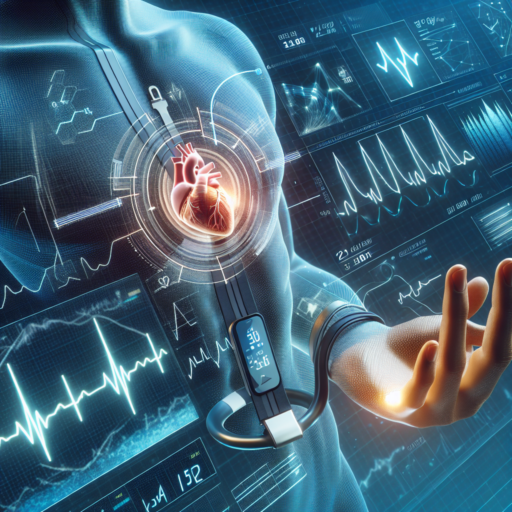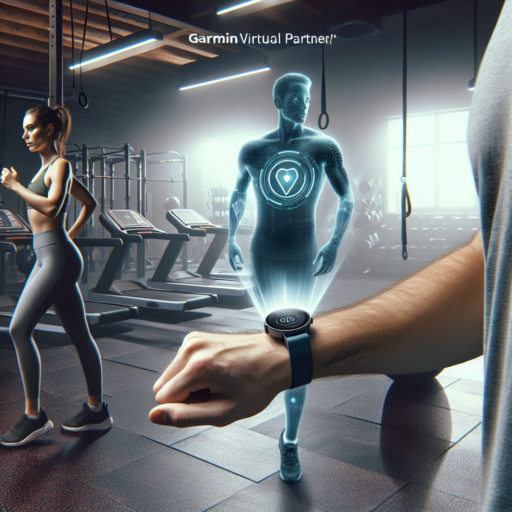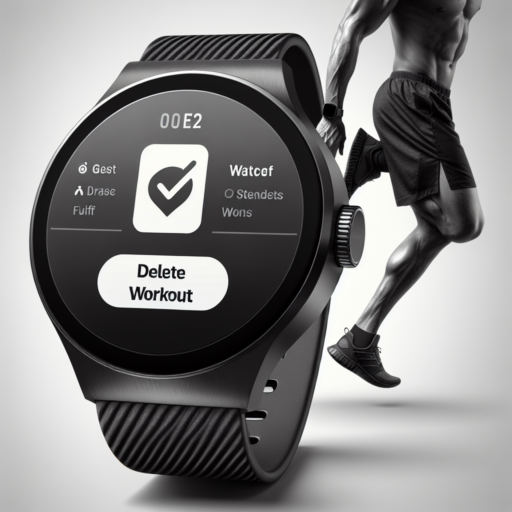No se han encontrado productos.
Understanding the Basics of Heart Rate Sensors
Heart rate sensors have become an indispensable part of modern fitness technology, providing athletes and health enthusiasts with critical data about their physical condition in real time. At its core, a heart rate sensor measures the electrical signals produced by the heart each time it beats. These sensors are ingeniously designed to translate these signals into a pulse rate, offering insight into one’s cardiovascular health and exercise intensity.
Types of Heart Rate Sensors
There are primarily two types of heart rate sensors: chest straps and optical heart rate sensors. Chest straps are known for their accuracy and reliability. They are worn around the chest, close to the heart, where they can accurately detect the heart’s electrical signals. On the other hand, optical heart rate sensors, commonly found in smartwatches and fitness bands, use LED lights to measure blood flow through the skin. While they offer the convenience of being wrist-worn, they might not always match the precision of chest strap sensors.
How Heart Rate Sensors Work
To understand the complexity behind heart rate sensors, it’s essential to grasp how they operate. Chest strap sensors utilize a process known as electrocardiography (ECG), where electrical signals generated by the heart are picked up by the electrodes in the strap. In contrast, optical sensors rely on a technology called photoplethysmography (PPG). This method involves shining light onto the skin and measuring the changes in light absorption, which vary with blood flow and thus the heart rate. Both technologies have their distinct advantages in terms of accuracy and user preference.
Being informed about the basics of heart rate sensors is the first step towards optimizing your fitness routine and health monitoring strategy. By understanding the different types of sensors and how they function, individuals can make a more informed choice that aligns with their health goals and lifestyle preferences.
Types of Heart Rate Sensors and How They Function
Heart rate sensors have become indispensable tools for monitoring physical health, enhancing sports performance, and tracking overall fitness levels. With technological advancements, various types of heart rate sensors have emerged, each utilizing different methodologies to measure heart rate. Understanding how these sensors operate can help individuals choose the right device for their needs.
Optical Heart Rate Sensors
One of the most common types of heart rate sensors found in fitness trackers and smartwatches are optical heart rate sensors. These devices use photoplethysmography (PPG) technology, which involves shining a light (usually a green LED) on the skin and measuring the variation in light absorption. This variation occurs due to the pulsating nature of blood flow, allowing the sensor to calculate heart rate. Optical sensors are praised for their convenience and non-invasiveness, making them ideal for continuous heart rate monitoring during daily activities and workouts.
Electrical Heart Rate Sensors
Another prominent type of heart rate sensor is the electrical heart rate sensor, often found in chest straps. These sensors measure the electrical activity of the heart through the skin, utilizing technology similar to an electrocardiogram (ECG or EKG). When the heart beats, it generates an electrical signal, which these sensors pick up to measure heart rate accurately. Due to their direct measurement approach, electrical heart rate sensors are renowned for their high precision and are frequently used by professional athletes and researchers for detailed heart rate analysis.
Contactless Heart Rate Sensors
Emerging in the realm of heart rate monitoring are contactless heart rate sensors. These innovative devices use radar technology to detect the heart’s movements, allowing for heart rate measurements without any physical contact. The sensor emits a low-power radar wave that reflects off the body, capturing the tiny movements of the heart as it beats. This groundbreaking technology paves the way for new applications in healthcare, offering a seamless and non-intrusive method for continuous heart rate monitoring, especially beneficial in clinical settings or for individuals with skin sensitivities.
The Science Behind Heart Rate Detection Technology
The exploration of heart rate detection technology delves into a sophisticated blend of biological science and innovative engineering. At its core, this technology leverages the principle that heartbeats generate physiological signals, which can be captured and analyzed to monitor an individual’s heart rate. This becomes crucial for not only fitness enthusiasts aiming to optimize their workouts but also for patients requiring continuous heart rate monitoring for health reasons.
One pivotal method in heart rate detection technology is Photoplethysmography (PPG). This technique involves emitting light onto the skin and then measuring the amount of light either absorbed or reflected by the blood. Since blood volume in the skin changes with each heartbeat, PPG can be utilized to detect heart rate with remarkable precision. Devices like smartwatches and fitness bands commonly employ PPG sensors, making heart rate monitoring both accessible and non-invasive.
Another significant advancement in this field is Electrocardiography (ECG or EKG) technology, which measures the electrical activity of the heart through electrodes placed on the skin. Unlike PPG, ECG provides detailed information about the heart’s condition, capable of detecting arrhythmias, heart disease, and other conditions. Though traditionally found in medical settings, recent developments have integrated ECG technology into consumer-grade devices, offering users detailed insights into their cardiac health.
Step-by-Step: How a Heart Rate Sensor Measures Your Pulse
Understanding how a heart rate sensor measures your pulse involves breaking down the technology and methodology behind these fascinating devices. At its core, the most common method used is called photoplethysmography (PPG), which relies on light to detect blood volume changes in your microvascular bed of tissue. Let’s dive deeper into the step-by-step process that makes this possible.
Step 1: Emitting Light
The first step in the process involves the sensor emitting a light, usually from a LED, towards the skin. As the light penetrates the skin, it reaches the blood vessels, which is where the magic begins. The color and intensity of the light used are crucial, with green light often being preferred due to its ability to penetrate skin and be absorbed by the blood efficiently.
Step 2: Light Absorption
After the light is emitted, the next phase is light absorption by the blood. Depending on the volume of blood flowing through the vessels at any given time, more or less light is absorbed. This is because blood, with its iron-rich hemoglobin, absorbs a significant amount of light, and as the heart beats, the amount of blood-and thereby the light absorption-fluctuates. This fluctuation is key to measuring heart rate.
Step 3: Sensor Detection
The final step involves the sensor detecting the amount of light that bounces back after hitting the blood vessels. A photodetector in the sensor captures this reflected light and uses it to calculate the variations in blood volume, and thus, pulse rate. These variations correlate directly to your heart beats, allowing the device to measure your pulse accurately over time. Sophisticated algorithms process the signal to filter out noise and isolate the heart rate signal, ensuring the readings are as accurate as possible.
Accuracy of Heart Rate Sensors: What You Need to Know
The quest for achieving optimal health and fitness levels has seen a substantial increase in the usage of heart rate sensors. Understanding the accuracy of these devices is crucial for enthusiasts and professionals who rely on these metrics to tailor their workout regimes or monitor health conditions. Heart rate sensors, available in various forms like wristbands, chest straps, and smartwatches, have become an integral part of the fitness landscape. However, the question remains: how accurate are they?
Several factors influence the accuracy of heart rate sensors. First and foremost, the type of sensor plays a significant role. Chest strap monitors, which directly measure the electrical activity of the heart, tend to offer more accurate readings compared to their wrist-worn counterparts. These wrist-based sensors, employing optical technology, can be affected by external factors such as light interference and motion, leading to potential inaccuracies. Moreover, the fit and placement of the device significantly impact its ability to provide precise readings.
Beyond the technical aspects, individual physiological factors also affect sensor accuracy. Skin tone, hair density, tattoo presence, and even the level of physical activity can influence the sensor’s reading. Although manufacturers continuously work on refining their algorithms to mitigate these issues, it’s essential for users to have realistic expectations regarding the precision of their heart rate data. By understanding these limitations and considerations, individuals can better interpret the data provided by their devices, ensuring a more informed approach to health and fitness monitoring.
Heart Rate Sensors in Fitness Trackers vs. Medical Devices
When it comes to monitoring heart rate, both fitness trackers and medical devices have become indispensable tools for consumers and healthcare professionals. However, the accuracy and purpose of heart rate sensors in these devices can differ significantly, highlighting the importance of understanding the capabilities and limitations of each.
Accuracy of Heart Rate Sensors
Fitness trackers, designed for the everyday user, employ optical heart rate sensors to monitor the blood flow through the skin. While these devices offer convenience and continuous monitoring, their accuracy can be affected by factors such as movement and skin tone. On the other hand, medical devices use more sophisticated methods, including electrical signals to measure heart activity (EKG), providing a higher level of accuracy critical for diagnostic purposes.
Intended Use and Limitations
Fitness trackers are primarily aimed at helping individuals monitor their general physical activity levels and provide estimations to encourage a healthy lifestyle. They are not, however, intended for medical diagnostics. Conversely, medical-grade heart rate monitors are specifically designed to detect and monitor heart conditions, informing healthcare decisions. Despite their enhanced accuracy, these devices usually lack the user-friendliness and continuous monitoring features of fitness trackers.
In comparing heart rate sensors in fitness trackers versus medical devices, it’s essential to consider the context of use. Fitness trackers offer an accessible way for individuals to engage with their health metrics, but they cannot replace the diagnostic accuracy of medical devices. Understanding this distinction is crucial for anyone relying on these technologies for health monitoring.
Improving Cardiovascular Health: The Role of Heart Rate Monitoring
Understanding the nuanced role that heart rate monitoring plays in improving cardiovascular health is crucial. By keeping track of your heart rate, not only can you ensure that your workouts are effective, but you can also avoid overexertion which may lead to adverse health effects. Regular monitoring can act as an early detection tool for potential heart-related issues, enabling timely intervention and adjustments to your fitness regime or lifestyle as needed.
Benefits of Heart Rate Monitoring for Cardiovascular Health
- Detection of Irregular Heartbeats: Regular monitoring helps in identifying arrhythmias or irregular heartbeats, which could be indicative of underlying health conditions.
- Optimizing Exercise Sessions: By observing heart rate zones, individuals can tailor their exercise intensity, ensuring that they are not under or overtraining, fostering better cardiovascular condition.
- Stress Management: Heart rate patterns can also reflect stress levels. By monitoring these patterns, people can learn to manage stress more effectively, thereby reducing its negative impact on heart health.
Integrating heart rate monitoring into one’s health and fitness regimen represents a proactive approach to safeguarding cardiovascular health. This methodology doesn’t just offer a snapshot of one’s current health status but also provides insights that can guide lifestyle modifications toward a heart-healthier future. In essence, heart rate monitoring serves as a cornerstone for both detecting potential health issues early and customizing exercise plans to optimize cardiovascular health.
Moreover, the digital revolution has paved the way for accessible heart rate monitoring tools, ranging from wearable tech to smartphone apps, making it easier than ever for individuals to take charge of their cardiovascular health. Through consistent heart rate monitoring, one can glean valuable data that plays a pivotal role in the journey towards a healthy heart and overall wellness.
Common Applications of Heart Rate Sensors
Heart rate sensors have become an integral part of modern health and fitness technology, with their applications spanning various fields. These devices, once exclusive to medical settings, now seamlessly integrate into our daily lives, enabling both professionals and enthusiasts to gain valuable insights into cardiovascular health and performance.
Fitness Tracking and Sports Training
The most widespread use of heart rate sensors is in fitness tracking devices and sports training applications. Athletes and fitness enthusiasts utilize these sensors to monitor their heart rate in real-time, helping them to optimize their workouts. By staying within specific heart rate zones, users can focus on fat burning, endurance improvement, or cardiovascular health enhancement. This data, often synced with mobile apps or sports watches, allows for personalized workout plans and tracking of progress over time.
Health Monitoring and Medical Applications
Beyond the realm of fitness, heart rate sensors play a critical role in health monitoring and medical diagnostics. These tools are used to track patients’ cardiovascular status over time, identifying potential heart conditions or monitoring the efficacy of treatments. In particular, heart rate variability (HRV) data extracted from these sensors can offer deep insights into autonomic nervous system function, stress levels, and overall cardiovascular health. Such applications showcase the potential of heart rate sensors to extend beyond fitness, supporting preventative healthcare and disease management.
Stress and Sleep Management
Another significant application of heart rate sensors is in stress and sleep management. By analyzing heart rate patterns, particularly HRV, devices can assess stress levels, providing users with feedback and recommendations to improve their mental and physical wellbeing. Similarly, sleep trackers use heart rate data to analyze sleep quality, identifying periods of REM and deep sleep. This information helps individuals understand their sleep patterns and make adjustments to improve sleep quality and, by extension, overall health.




